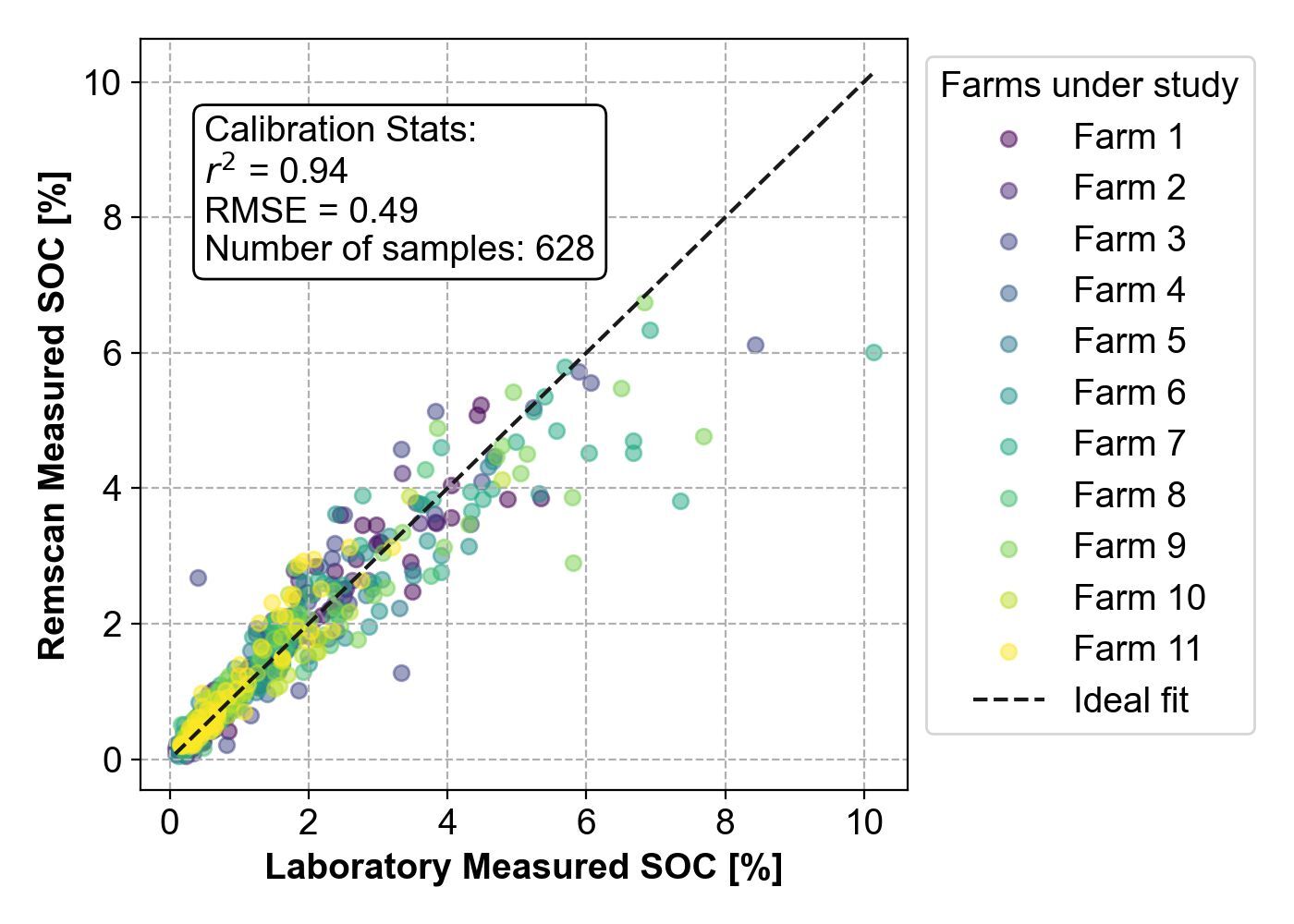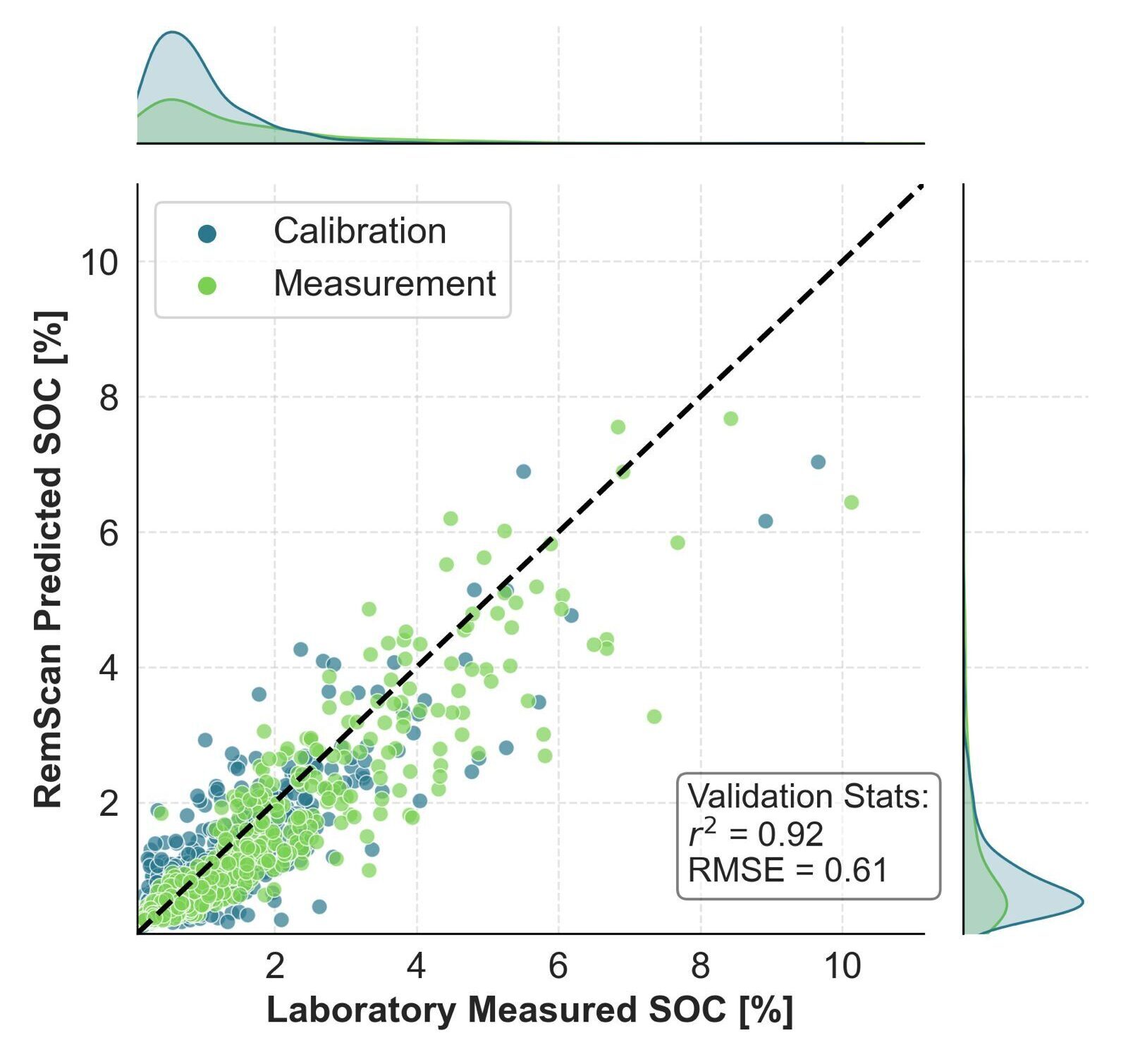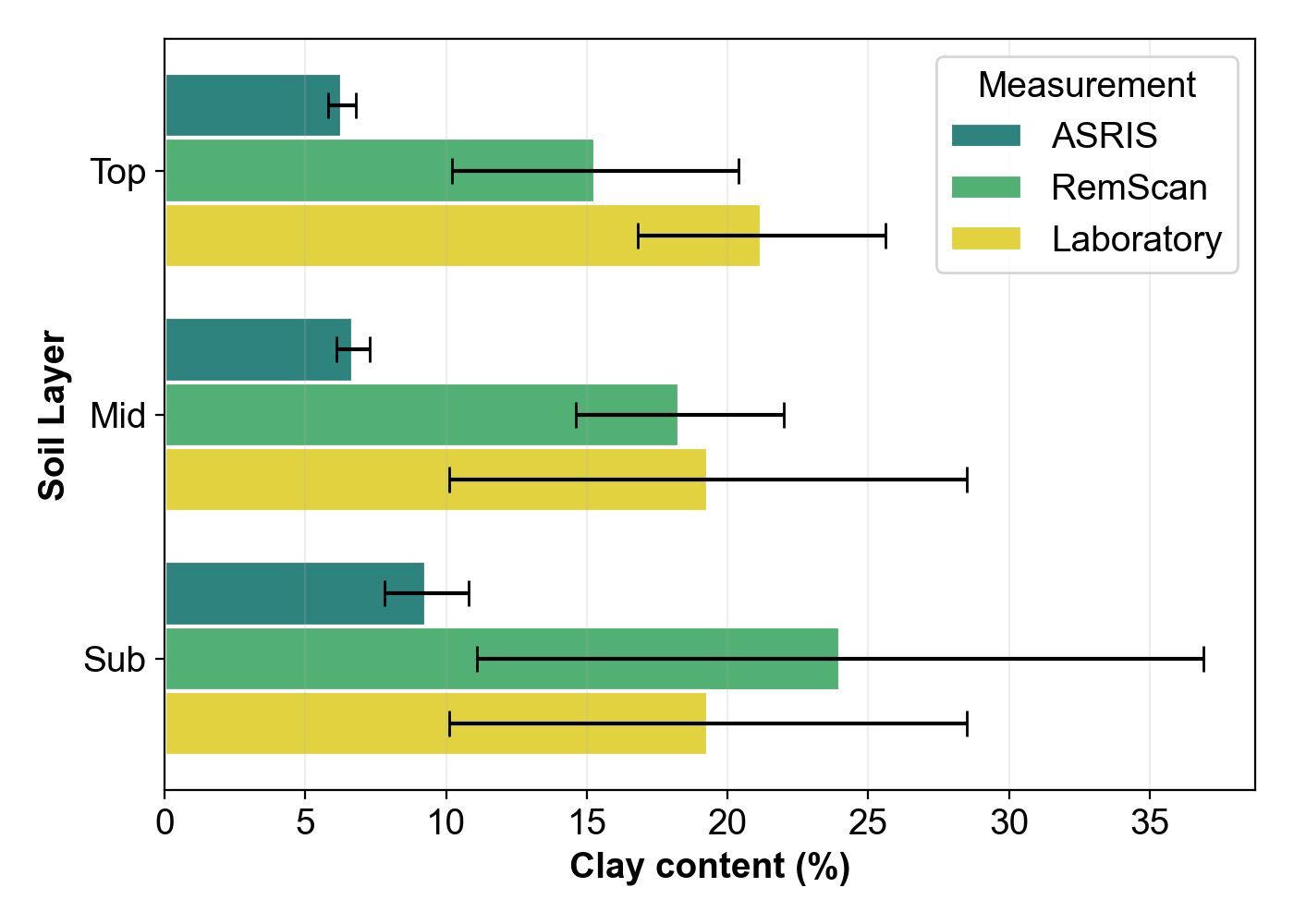Advancing Soil Organic Carbon Analysis
A Technological Leap in Soil Organic Carbon Measurement
A Technological Leap in Soil Organic Carbon Measurement

Site Selection: The site selection for this project was designed to cover a diverse range of soil types and conditions encompassing medium to high-rainfall agricultural regions. These criteria provide an accurate picture of the various agricultural landscapes in southwest Western Australia. A total of 210 locations across 11 farms in the South West agricultural region of Western Australia were selected as test sites for the project.
Analysis Techniques: Soil samples were collected using a mechanised post-driver at 10 cm increments up to a maximum depth of 30 cm to capture SOC distribution across soil layers. These samples were analysed using two techniques to obtain estimates for SOC and total organic carbon:
Additional Measurements: Proximal geophysical surveys were used to obtain detailed soil property data, including electromagnetic induction and gamma radiometric measurements. The clay content of the soil, indicative of SOC sequestration potential, was predicted by RemScan and compared with large-scale soil clay surveys. Gravel content was measured at the laboratory and used to expand the geophysical understanding of the soil samples and any impact on carbon storage.
Calibration & Prediction: Site-Specific Model
Accurate soil carbon measurements are crucial for effective soil management and carbon sequestration assessments. This project demonstrated that SOC is highly correlated with features in the Mid-IR spectra collected by RemScan. A site-specific calibration constructed from the farm data shows high accuracy in SOC prediction, evidenced by a strong 94% correlation with the laboratory dry combustion measurements.

Figure 1: Predictive performance of the revised model developed for soils from the study. The black dotted line indicates the y=x line, while the different colours represent predictions from various farms.
This demonstrates that RemScan’s spectral measurements are directly comparable to those of an established laboratory. However, RemScan SOC measurements are 10 to 30 times faster and require less sample preparation than dry combustion.
Calibration & Prediction: Library-Based Model
At Ziltek, we developed an alternative calibration for the farms under study, utilising Ziltek’s Australian soil carbon spectral library. Soil spectra from the farms were used to seed a specially designed search algorithm to find spectrally similar samples within the library. These samples, a small subset of the total library data, were then used to produce a SOC calibration tuned to the specific soil types under study. The library-based calibration was then used to predict the SOC content of the farm samples.

Figure 2: Predictive performance of the model built using Ziltek’s Australian SOC library. The black dotted line indicates the y=x line. The calibration dataset consists of the best-matching samples taken from Ziltek’s mid-IR library, while the validation samples include those taken as part of this study.
The measurement statistics for the library predictions compare favourably with those based on farm-derived calibrations (R² = 0.92, RMSE = 0.61). This suggests that minimal laboratory work is necessary to obtain accurate SOC measurements using the RemScan. Our custom spectral library-based calibration method offers accurate carbon measurement at a fraction of the cost and time required for traditional laboratory measurements. Further improvements can be made by expanding the spectral library through the identification of novel samples as they are encountered and directing those samples for laboratory analysis. In this way, the applicability of the method and its accuracy across all soil types can be steadily improved. This work is currently underway.
Soil Texture Insights
Soil texture variability poses considerable challenges in accurately estimating the SOC potential of soils across different landscapes. Clay soils can hold significantly more SOC than sandy soils and are therefore better candidates for SOC sequestration projects. The measurement of soil clay percentage provided by RemScan’s soil texture calibration was compared with publicly available soil clay maps from the Australian Soil Resource Information System (ASRIS) and texture measurements from a commercial soil laboratory for one of the test farms included in the study.

Figure 3: Qualitative comparison of predicted clay content from ASRIS, RemScan, and an accredited laboratory across three sublayers for a test farm. Error bars indicate the standard deviation. ASRIS estimates were averaged from a 90 m gridded data.
A comparison of clay content predictions is shown in Figure 3. Considering that measurements were taken over different but overlapping depth bands, timelines, and sampling locations within the same farm, we are only concerned with a qualitative comparison. In all cases, the RemScan-predicted clay content was consistent with laboratory measurements within the uncertainty range and was significantly higher (50% to 200%) than publicly available estimates. This discrepancy suggests that relying on publicly available data could lead to underestimating the SOC sequestration potential of soils.
This project has significantly advanced the methodology for calibrating RemScan for soil organic carbon (SOC) measurements, particularly in soils from the medium to high-rainfall agricultural regions of southwest Western Australia. By strategically incorporating the RemScan instrument into the standard sample measurement pipeline, Mid-IR spectra of the soils were collected and combined with laboratory dry combustion measurements to fine-tune mid-infrared calibrations specific to the farms involved in the project.
A major outcome of the project was the measurement of soil carbon in the samples without utilizing any laboratory data from the farms under study. Instead, by leveraging Ziltek’s extensive soil carbon spectral library to generate a custom calibration for the farms, we demonstrated an extremely cost-effective and rapid method for soil carbon measurement. This method is currently being scaled up through the targeted addition of novel soil samples and further validated across Australia as part of Ziltek’s ongoing Soil Carbon R&D program.
This work clearly demonstrates that RemScan is a valuable tool for soil carbon measurement and soil carbon sequestration projects. It provides inexpensive, fast, and accurate measurements of soil carbon, along with additional insights through RemScan’s soil texture measurement capabilities. Moreover, RemScan offers clear advantages over publicly available datasets for soil clay content data. These comprehensive insights into soil properties make RemScan a valuable tool for soil carbon projects.